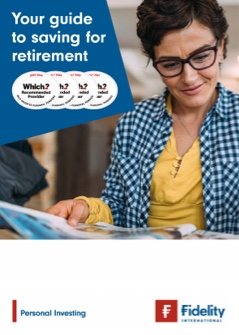In order to request exit fees re-imbursement you will be required to complete an exit fees re-imbursement form which you can download by clicking here, or request over the phone by calling us on 0333 300 3351.
Terms and conditions for re-imbursement of exit fees
This offer does not apply to any investments linked to an Adviser / Intermediary or third party.
Fidelity will reimburse the exit/redemption fees charged to a customer by their former provider/s when they move their investments (minimum of £100) to Fidelity Personal Investing, up to a maximum amount of £500 per customer.
An exit fee is an administration charge which is imposed by the former provider and arises directly as a result of processing the transfer or re-registration of the customer’s investments to Fidelity. Fidelity will not reimburse the customer for any loss of investment returns, loss of interest, dealing charges, penalties for transferring investments before their maturity dates or any other charges associated with your transfer or re-registration.
Where a re-registration or transfer is not possible and the customer chooses to sell their investments held through another provider and subsequently make new investment/s (minimum £10,000) through Fidelity Personal Investing, Fidelity will cover any account closure fees charged by the customer’s former provider (excluding any dealing charges) of up to £500 per customer. Fidelity will not cover any bid-offer spreads or any capital gains tax liability arising as a result of these transactions.
Exit and account closure fees reimbursement must be claimed within a 6 month period from date of transfer of the customer’s investments to Fidelity. Exit fees will be reimbursed for transfers and re-registrations and account closure fees will be reimbursed provided the conditions above are met. Products included: ISAs, Investment Accounts, EBS SIPP, Fidelity Personal Pension, Fidelity SIPP, Unit Trusts, OEICs, SICAVs, Exchange Traded Funds, Investment Trusts and Shares.
To qualify for the reimbursement, the fees from the customer’s former provider must have been triggered as a direct result of the transfer or re-registration to Fidelity Personal Investing, or the closure of an account where the customer has subsequently (within 6 months) invested at least £10,000 through Fidelity Personal Investing. If the customer is transferring investments to more than one provider from their former provider at the same time, Fidelity will only reimburse the fees which are incurred as a result of direct transfer or re-registration to Fidelity. Other fees or charges unconnected with the transfer will not be reimbursed.
The completed Exit Fee Reimbursement Form and documentary evidence of the charge will need to be provided in order for the exit fees to be reimbursed to the customer. To claim the reimbursement of any account closure fees, documentary evidence of the closure fee levied will need to be provided to Fidelity, along with confirmation that a minimum of £10,000 has been invested with Fidelity within 6 months of incurring such closure fee.
The documentary evidence referred to above, must be either a copy of the charge confirmation letter from the former provider or a statement showing the charge being deducted.
Payment will be made to the customer by BACS when a bank mandate is held on the account. Alternatively, payment will be made by cheque.













